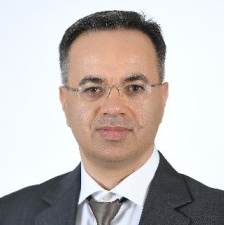Advances in Hybrid Radio Frequency (RF) and Optical Wireless Communication (OWC) Systems
A special issue of Network (ISSN 2673-8732).
Deadline for manuscript submissions: closed (28 February 2022) | Viewed by 6588
Special Issue Editors
Interests: beyond 5G (B5G) wireless technologies; physical layer optimization and performance analysis; wireless power transfer; machine learning for future wireless systems; reconfigurable intelligent surfaces; cooperative and relaying networks; information theory; signal processing
Special Issues, Collections and Topics in MDPI journals
Interests: optical wireless communications; signal processing; physical layer security; machine learning; Internet of Things
2. Department of Systems and Computer Engineering, Carleton University, Ottawa, ON K1S 5B6, Canada
Interests: advanced digital signal processing techniques for wireless communications; RIS; 5G and beyond; MIMO; optical communications; IoT with emphasis on battery-free devices; machine learning
Special Issues, Collections and Topics in MDPI journals
Interests: wireless communication networks; optical wireless communications; optimization for communications and smart grids
Special Issues, Collections and Topics in MDPI journals
Interests: optical wireless communications; visible light communications (VLC) and LiFi networks; heterogenous radio-optical systems; backscatter communication; machine learning for communications and networks
Special Issues, Collections and Topics in MDPI journals
Special Issue Information
Dear Colleagues,
The unprecedented high volume of wireless data traffic puts tremendous strain on existing radio frequency (RF) networks. This includes short-range wireless communication technologies such as wireless fidelity (WiFi), which accounts for the majority of Internet protocol traffic. To tackle the looming RF spectrum crisis, future wireless networks will have to exploit other parts of the electromagnetic spectrum, including the optical band. Optical wireless communications (OWC), which include visible light communications (VLC), ultraviolet communications, and optical camera communications (OCC), are key enablers for unlocking the vast optical spectrum and providing ultra-high-speed and low-latency wireless connectivity. Despite the great advantages offered by OWC, tackling the limitations of these evolving technologies is critical to developing feasible solutions. For example, VLC coverage is highly susceptible to the line-of-sight path conditions, and, thus, performance could be severely degraded in the presence of a blockage. Another limitation of VLC is the high correlation between the optical subchannels, which means that the multiple-input-multiple-output (MIMO) channel can be rank-deficient. Such limiting factors can hinder the full realization of the potential of OWC.
A recently proposed promising approach to ubiquitous indoor wireless connectivity is to combine OWC with existing RF networks to form a hybrid network. As OWC and RF technologies operate in separate frequency bands, there is no interference caused, and the hybrid network is capable of providing enhanced coverage and a greater throughput compared to a stand-alone network. Besides, the concept of combining the functions of illumination and communication has the merit of significantly improving cost savings and reducing carbon footprints.
In light of the above, it is foreseen that the implementation of hybrid networks to augment future wireless communications would require a high and sophisticated level of coordination and optimization. Moreover, hybrid systems require a high level of adaptability to allow the most suitable technology to be used for the most suited scenario, which requires enabling a degree of intelligence and autonomy. The purpose of this Special Issue is to showcase contributions that address fundamental and practical challenges for the efficient design, analysis, and evaluation of hybrid RF-OWC networks. We would like to invite you to submit original papers, case studies, and reviews that address the challenges and potential of hybrid wireless networks.
The topics relevant for this Special Issue include (but are not limited to) the following:
- Network structure design, technical enablers, and business models
- Experimental demonstrations and prototyping
- Resource management optimization in hybrid networks
- Mobility-aware access point selection and load balancing
- Multi-user access and handover techniques
- Hybrid MIMO and massive MIMO
- Physical layer security design and evaluation
- Performance analysis and optimization of hybrid networks
- Internet-of-things applications in hybrid networks
- Machine learning-enabled physical layer design and re-configuration
- The integration of intelligent reconfigurable surfaces with hybrid networks
- Energy-efficient schemes for hybrid networks
- Hybrid LiFi-WiFi networks
- Integration of THz and mmWave communications
- Integration of multiple access techniques with hybrid networks
- Hybrid RF/FSO backhaul in UAV-assisted cellular networks
- Hybrid RF/FSO non-terrestrial networks
- Integration of hybrid wireless access in beyond 5G networks
- Information-theoretic frameworks for hybrid networks
- Hybrid cooperative networks
- Simultaneous lightwave and RF power transfer
Dr. Lina Mohjazi
Dr. Hanaa Abumarshoud
Prof. Dr. Sami Muhaidat
Dr. Panagiotis D. Diamantoulakis
Dr. Hany Elgala
Guest Editors
Manuscript Submission Information
Manuscripts should be submitted online at www.mdpi.com by registering and logging in to this website. Once you are registered, click here to go to the submission form. Manuscripts can be submitted until the deadline. All submissions that pass pre-check are peer-reviewed. Accepted papers will be published continuously in the journal (as soon as accepted) and will be listed together on the special issue website. Research articles, review articles as well as short communications are invited. For planned papers, a title and short abstract (about 100 words) can be sent to the Editorial Office for announcement on this website.
Submitted manuscripts should not have been published previously, nor be under consideration for publication elsewhere (except conference proceedings papers). All manuscripts are thoroughly refereed through a single-blind peer-review process. A guide for authors and other relevant information for submission of manuscripts is available on the Instructions for Authors page. Network is an international peer-reviewed open access quarterly journal published by MDPI.
Please visit the Instructions for Authors page before submitting a manuscript. The Article Processing Charge (APC) for publication in this open access journal is 1000 CHF (Swiss Francs). Submitted papers should be well formatted and use good English. Authors may use MDPI's English editing service prior to publication or during author revisions.
Keywords
- Optical wireless communications
- Visible light communications
- Radio frequency
- Resource management
- Wireless communications
- Internet-of-Things
- Hybrid RF-OWC
- Multi-user access
- Energy harvesting
- Optimization
- Physical layer security








